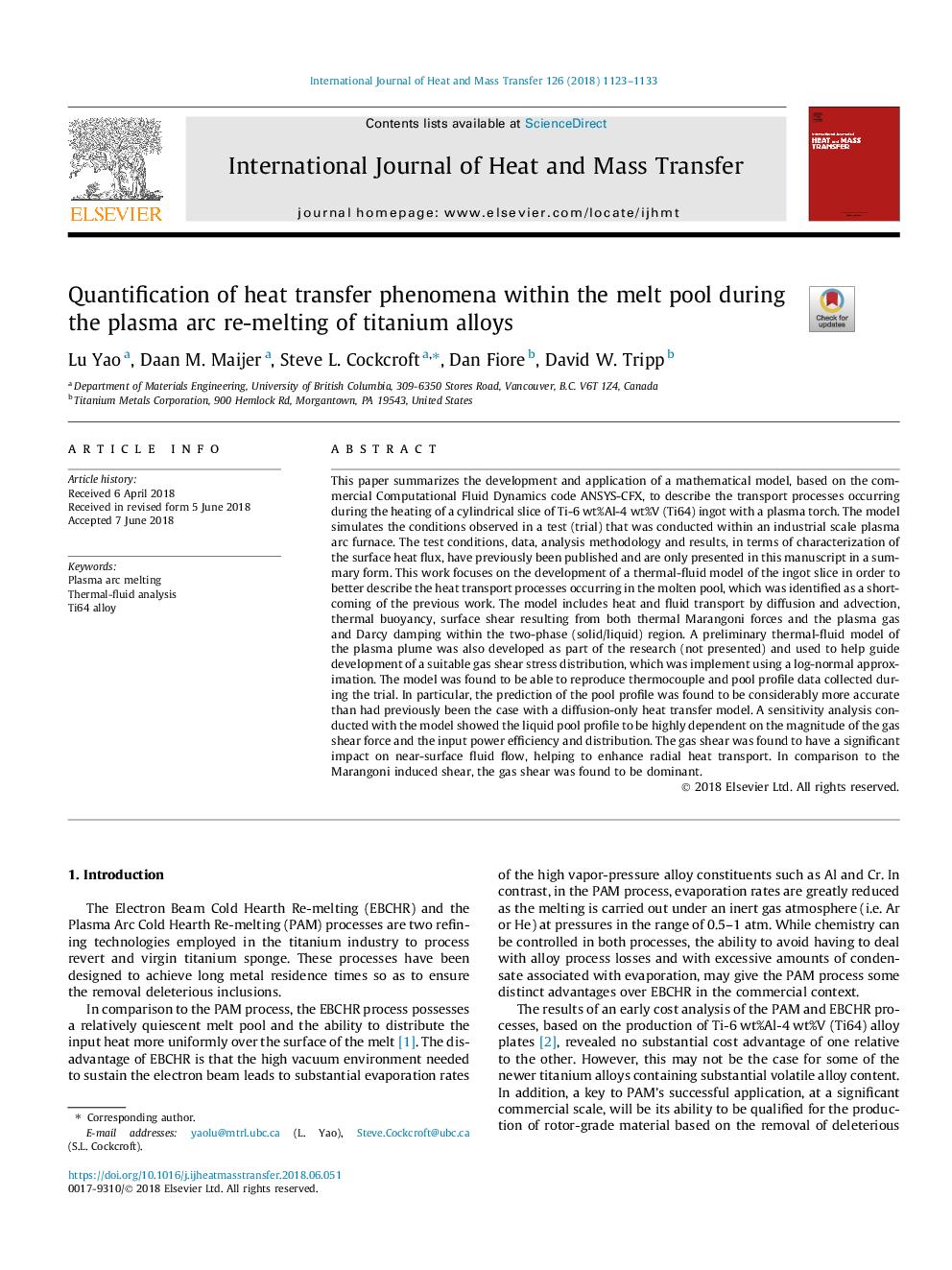| کد مقاله | کد نشریه | سال انتشار | مقاله انگلیسی | نسخه تمام متن |
|---|---|---|---|---|
| 7053938 | 1458013 | 2018 | 11 صفحه PDF | دانلود رایگان |
عنوان انگلیسی مقاله ISI
Quantification of heat transfer phenomena within the melt pool during the plasma arc re-melting of titanium alloys
ترجمه فارسی عنوان
کوانتومی پدیده انتقال حرارت درون استوانه ذوب در طی قوس پلاسمای مجدد ذوب آلیاژهای تیتانیوم
دانلود مقاله + سفارش ترجمه
دانلود مقاله ISI انگلیسی
رایگان برای ایرانیان
کلمات کلیدی
موضوعات مرتبط
مهندسی و علوم پایه
مهندسی شیمی
جریان سیال و فرایندهای انتقال
چکیده انگلیسی
This paper summarizes the development and application of a mathematical model, based on the commercial Computational Fluid Dynamics code ANSYS-CFX, to describe the transport processes occurring during the heating of a cylindrical slice of Ti-6â¯wt%Al-4â¯wt%V (Ti64) ingot with a plasma torch. The model simulates the conditions observed in a test (trial) that was conducted within an industrial scale plasma arc furnace. The test conditions, data, analysis methodology and results, in terms of characterization of the surface heat flux, have previously been published and are only presented in this manuscript in a summary form. This work focuses on the development of a thermal-fluid model of the ingot slice in order to better describe the heat transport processes occurring in the molten pool, which was identified as a shortcoming of the previous work. The model includes heat and fluid transport by diffusion and advection, thermal buoyancy, surface shear resulting from both thermal Marangoni forces and the plasma gas and Darcy damping within the two-phase (solid/liquid) region. A preliminary thermal-fluid model of the plasma plume was also developed as part of the research (not presented) and used to help guide development of a suitable gas shear stress distribution, which was implement using a log-normal approximation. The model was found to be able to reproduce thermocouple and pool profile data collected during the trial. In particular, the prediction of the pool profile was found to be considerably more accurate than had previously been the case with a diffusion-only heat transfer model. A sensitivity analysis conducted with the model showed the liquid pool profile to be highly dependent on the magnitude of the gas shear force and the input power efficiency and distribution. The gas shear was found to have a significant impact on near-surface fluid flow, helping to enhance radial heat transport. In comparison to the Marangoni induced shear, the gas shear was found to be dominant.
ناشر
Database: Elsevier - ScienceDirect (ساینس دایرکت)
Journal: International Journal of Heat and Mass Transfer - Volume 126, Part B, November 2018, Pages 1123-1133
Journal: International Journal of Heat and Mass Transfer - Volume 126, Part B, November 2018, Pages 1123-1133
نویسندگان
Lu Yao, Daan M. Maijer, Steve L. Cockcroft, Dan Fiore, David W. Tripp,
